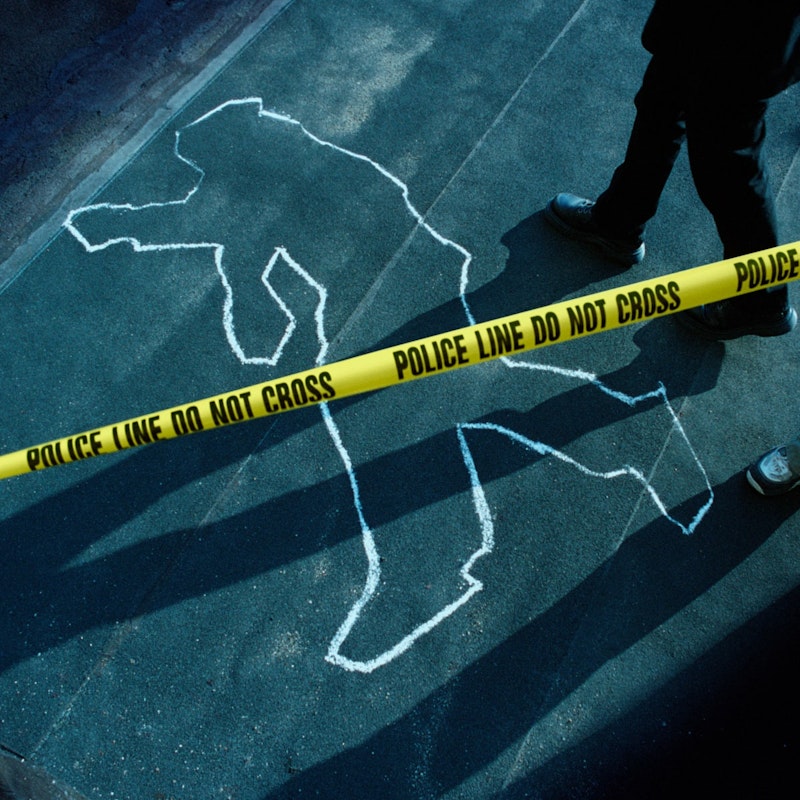“If it bleeds it leads” was the unofficial slogan of sleazy tabloids, but with the current flourishing of true crime podcasts, shows filled with murderous mayhem and fanatical online subcultures dedicated to serial killers, “If it mutilates it memes” is more appropriate. From Dahmer to Des—the brutal exploits of history’s monsters are gripping mainstream audiences. The most recent mania can be seen following the brutal murder of four young people in their off-campus residence in Moscow, Idaho last November. The “Idaho murders” have become an internet sensation, with grisly details and bloody photographs going viral on TikTok and Reddit.
Since the arrest of chief suspect, Bryan Kohberger, activity has increased as more details of the gruesome deaths are leaked. The subreddit r/IdahoMurders has over 100,000 readers and is updated multiple times a day. Nobody knows what to make of the new digital age of ghastly fascination, with mainstream commentary tending towards the judgmental and dismissive. This conventional analysis sees a fascination in graphic murders and serial killings as inherently lurid, an example of the pornographisation of real-life horrors.
More recently there’s an increasingly tiresome injection of analysis based on race and gender to the mix, with true crime fascination lumped in with apologetics for police brutality against people of color or pegged as a unique pathology of neurotic white women. But this reflects an incredible naivete about human nature, and the perennial quality of blood lust. As just one historical note, take the descriptions of the public execution of Robert-François Damiens for attempted regicide in 1757 described in Michel Foucault’s work Discipline and Punish: [O]n a scaffold… the flesh will be torn from his breasts, arms, thighs and calves with red-hot pincers, his right hand, holding the knife with which he committed the said parricide, burnt with sulphur, and, on those places where the flesh will be torn away, poured molten lead, boiling oil, burning resin, wax and sulphur melted together and then his body drawn and quartered by four horses and his limbs and body consumed by fire, reduced to ashes and his ashes thrown to the winds.
Such a gruesome display of hyperviolence occurred among a crowd of onlookers, no doubt experiencing the same mix of excitement and disgust as contemporary teens on TikTok as they read the latest autopsy reports. All that’s changed is the cover rationale for gawking. When it comes to 18th-century torture, one was seeing “justice being served.” As for the 21st-century true crime boom, you’ll hear confabulations about “an interest in criminal psychology” or “learning how to protect myself.”
Thankfully, many Eastern cultures are far less embarrassed about their rubbernecking and have a more straightforward reason for morbid fascination. Buddhist traditions have long seen value in contemplating death, decay and murderous violence. For example, Visuddhimagga, a sutta within the Pali Canon (part of the key texts of Theravāda Buddhism) describes a number of meditation practices focused on death and decomposition. In “the cut up” students are called to meditate on gruesome, fatal injuries “found on a battlefield or in a robbers’ forest or on a charnel ground where kings have robbers cut up or in the jungle in a place where men are torn up by lions and tigers.”
Dwelling on such tortures seems completely unhealthy to the Western mind, yet is seen as a natural process in Buddhism towards quelling anxieties around death and attachments to life which cause great suffering. It’s normal to contemplate the sufferings in the world yet in the West we’re often encouraged to focus more on the brighter side of life, seeing our own death and that of our loved ones as something terrible but delayed into the far future.
As the great moralist Emil Cioran once noted, “It is an integral part of normal people's superficial equilibrium to take life as absolutely independent from death and to objectify death as a reality transcending life.” In other words, Western thinking sees death as an “event” happening to us in the future best ignored until necessary, rather than the tendency towards disintegration built into all things. This wilful ignorance may provide temporary contentment, but it sacrifices knowing the world for how it really is. The spectacular hyperviolence of mass murder doesn’t pull any punches; if there’s one lesson to be learned from true crime, it’s that a person can quickly become inanimate meat in one simple act of sadism.
This violence may horrify and disgust, but it also teaches.
Rather than dismissed as a form of prurient entertainment, we should see the recent openness about the morbid fascinations as a step towards a more honest contemplation of death. There’s no need for high-minded justifications about psychology, gawking at violence has value all on its own.

